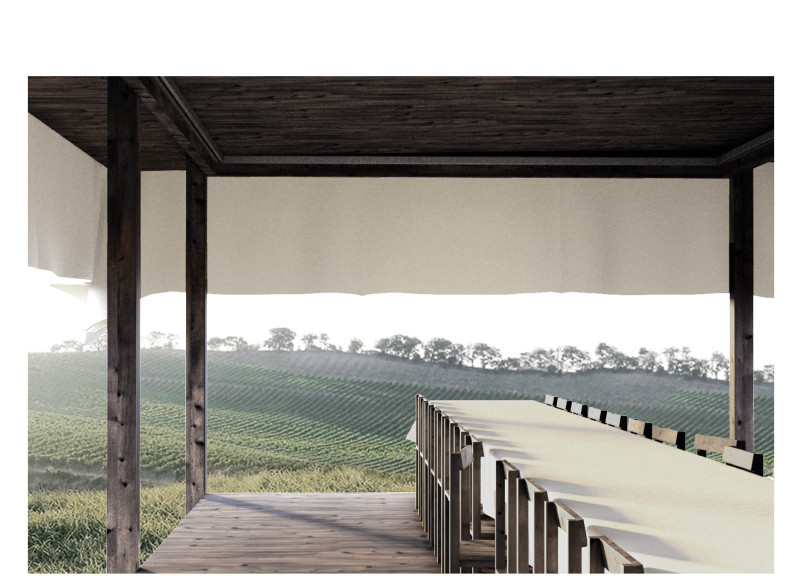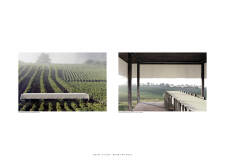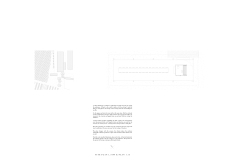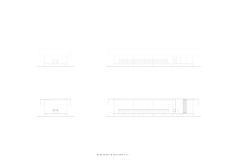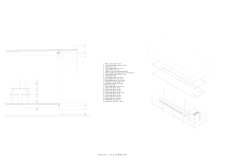5 key facts about this project
The architecture of the project prioritizes openness and connectivity with the outdoor environment. The layout is organized around a long table, designed to facilitate group gatherings and experiences around shared meals. This arrangement fosters an inviting atmosphere while allowing guests to partake in the surrounding vineyard views. The design also integrates sustainable practices, utilizing locally sourced materials, thus reducing the ecological footprint of the building.
Unique Design Approaches
The project diverges from conventional vineyard buildings through its minimalist architectural approach. Key features include the use of dark wooden beams to provide structural support while connecting visually and texturally with the natural environment. Additionally, the careful placement of glass panels creates transparency, allowing for an uninterrupted view of the vineyard, which reinforces the connection between the interior space and its landscape.
The aluminum elements contribute to a contemporary aesthetic, emphasizing clean lines and modern utility. This choice of materials ensures durability and weather resistance while maintaining a cohesive design language. The shading components, crafted from weather-resistant fabric, enhance comfort for users by allowing for flexibility in outdoor dining.
Integration of Natural Elements
This project also focuses on the integration of natural elements into its architecture. The design promotes natural ventilation and uses sustainable materials to reduce environmental impact. Concrete forms the base of the structure, providing stability while maintaining a cohesive interaction with the site. The overall volume of the building is designed to reflect the contours of the landscape, allowing it to blend seamlessly into its surroundings.
For deeper insights into the architectural plans, architectural designs, and unique architectural ideas of this project, readers are encouraged to explore the complete project presentation. The details in architectural sections further illustrate the design’s thoughtful response to the vineyard context, making it a noteworthy study within contemporary architectural practice.


